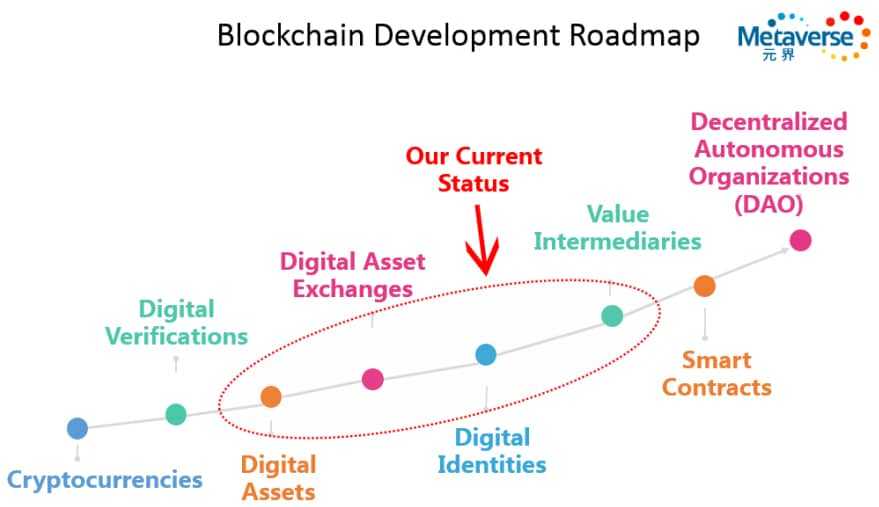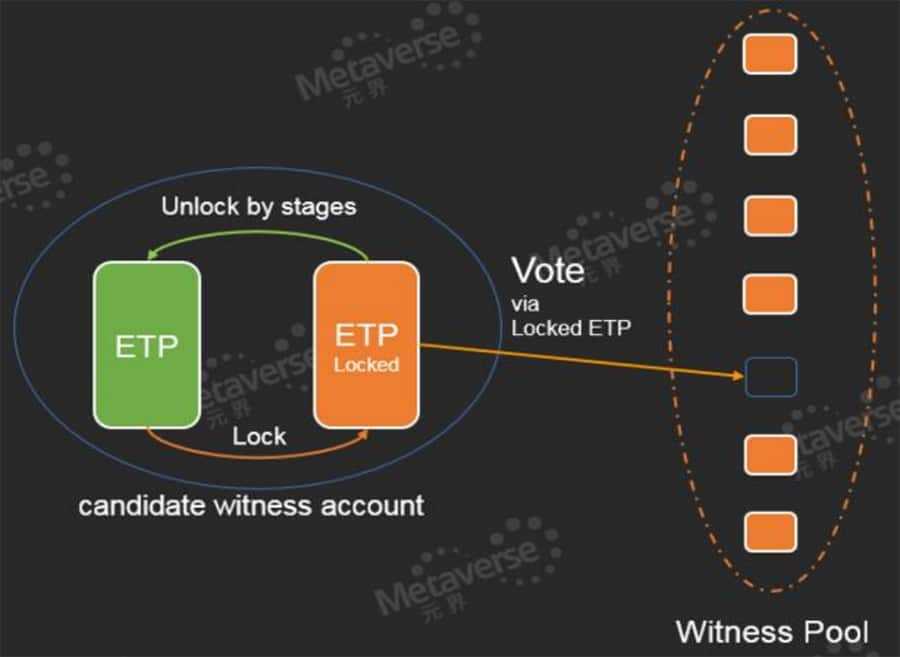Metaverse ETP: Everything You Need to Know
Metaverse ETP is one of the less well understood cryptocurrencies that has recently garnered a lot of interest as they have climbed up the market cap rankings.
Metaverse is on a mission to create a financial system where your digital identity and digital assets become the foundation for financial transactions, with the assistance of a value intermediary.
It’s a unique view that could completely transform not only financial services and transactions, but also the blockchain ecosystem itself. With such large promises, should you consider Metaverse?
In this review we will give you everything you need to know about the project including the team members, technology, use cases and ETN token prospects.
Let's jump in!
How Metaverse ETP Developed
The creators of Metaverse were inspired in part by the 1992 science fiction novel from Neal Stephenson called Snow Crash. In the novel humans communicate with each other and electronic agents using their Avatars. Everything in the novel takes place in a virtual reality world, and the Metaverse creators feel that our current world is becoming very similar to this vision, with communication now taking place increasingly online rather than in person.
Because of this they foresee more and more digital transfers taking place online and on a blockchain in the future. As this evolves there will be an increase in digital identities and intermediaries, and his will create a new economic model that shifts the internet from an informational model to an internet of value.

On a less abstract level, the mission of Metaverse is to change the way financial services are offered and transactions are processed. They plan on doing this by improving identity verification systems, and by creating a global network of digital assets, digital identities, and value intermediaries.
This then is the basis of the Metaverse network and blockchain. With these digital constructs and the Metaverse Smart Token, anyone can create and distribute their own store of value or digital currency.
The Metaverse Team
The team behind Metaverse is located in Shanghai, China. This has led to a Chinese Ethereum although this have often been the moniker given to NEO.
The CEO and founder is Eric Gu, who has had extensive experience doing programming work in Canada and the U.S. He was formerly one of the founders of NEO but left that project to build an improved blockchain, which is Metaverse.

The CTO of Metaverse is Chen Hao, who travels extensively to international conferences to explain the concepts of blockchain-as-a-service and the internet of value.
Metaverse differs from other BaaS services in that it focuses on a public blockchain. This gives both developers and users their own private keys so that they are able to access services from any point.
Metaverse Partnerships
Metaverse has already forged several partnerships that could help bring it more adoption. The most recent is a partnership with a company called Lexit to tokenize intellectual property. Lexit’s primary business model is a searchable marketplace here unused intellectual property can be bought and sold.
A second partnership is with the crowdfunding blockchain project KICKICO, which is based in Moscow. And there’s another partnership with Chinese crypto-investment bank CyberTrust.

Metaverse is also partnered with Draper Dragon, a subsidiary of the Draper investment company that seeks to build relationships between the U.S. and China in emerging technologies. There’s a final partnership with the promising startup Zengold, which is using the Metaverse blockchain to digitize gold.
Metaverse Technology
As I mentioned earlier, the Metaverse technology is thought of as a replacement for Ethereum in China. There is one crucial difference between the two though, and that is that Metaverse is focused on smart assets, while Ethereum is focused on smart contracts.
There are a number of components included in the Metaverse technology:
Consensus Mechanism
Currently Metaverse works on a Proof of Work (PoW) consensus mechanism, but since there are two stages planned for the consensus mechanism it won’t always remain as PoW.
The developers intend for PoW to be used for the first several years, during which GPU mining will secure the network. The algorithm being used during this phase is Ethash. In the meantime the development team is working on the second consensus mechanism, which will be called HeartBeat Token-Height Delegated Proof of Stake (HBTH-DPoS).
Once this new algorithm is created, Metaverse will switch to the Delegated Proof of Stake consensus mechanism. There are several flaws to this algorithm. The first is that attacks can happen if an entity acquires a large number of tokens rapidly. The second flaw regards voters, who are no longer engaged with the network after choosing a delegate.

The response to these flaws by the Metaverse developers was in two new concepts – HeartBeat and Token-Height. HeartBeat is a measure of the recent activity of users on the network, while Token-Heights is a measure of how long a user has held ETP in a wallet address.
Metaverse Smart Tokens (MST)
Because Metaverse was built on the concept of smart assets there need to be existent digital assets for smart contracts to work on the blockchain. The design of MST is such that its dataset describes it as an asset. When created, the data description should be both difficult to modify and reusable.
Once assets have been registered they need to be recognized by other users in order for the formation of operational attributes, value and attributes. All of these will be displayed in market price changes and trades.
In order to help users with proof of the existence of assets Metaverse plans on using intermediaries (called oracles) that will provide off-chain data that proves the existence of assets and their value. The oracles will also be responsible for providing credit scores for digital identities.
The ETP Token
The ETP token was named after “Entropy”, the 2nd Law of Thermodynamics that is used to describe chaos in a system. ETP is a utility token, making it only truly valuable within the Metaverse ecosystem as a fee for miners and developers or as collateral.
ETP Fees and Rewards
There will be fees on the Metaverse network charged in ETP for various transations, including verification of assets and identities by oracles, becoming an oracle, registering an avatar, and creating digital assets.

Miners can currently receive a 3 ETP reward for mining a block on the Metaverse blockchain. That amount will drop by 5% for every 100,000 blocks that are mined. There is also a deposit lock function for deposits, and rewards are given to users who lock their deposits.
Micro-Inflation Accounting
Because ETP is a utility token it has no value outside the Metaverse network, and so it shouldn’t be subject to any inflationary pressures. However there are always tokens being lost due to forgotten passwords, carelessness and death, which means the number of ETP in circulation will steadily decline. Because of this the ETP economic model has micro-inflation built-in when increasing the circulating number of ETP.
ETP Price Performance
The initial ICO for the ETP token was held on September 5, 2016. Each token was priced at $0.30 and the ICO raised roughly $2 million. It has had a bit of a rollercoaster ride since, rising to nearly $6 in June 2017, then dropping below $0.60 by September 2017, only to rise again to nearly $5 in October. It bounced between $2.50 and $5.00 for the rest of 2017, and then dropped along with the rest of the cryptocurrency markets, trading as low as $0.52 by June 2018.
Since then it has seen a recovery and as of September 14, 2018 is trading at $3.35 and has been one of the best performing coins in the prior three months. That rally has come following the release of the main net upgrade, which allows users to create their personal Digital Identities and also issue two types of tokens – the Metaverse Smart Token (MST) and the Metaverse Identifiable Token (MIT).
The largest exchange for ETP is TOPBTC, where the Chinese Yuan is the primary currency used for purchases. Bitfinex also has a decent trade volume, with ETP being purchased there with USD, BTC and ETH. Finally, HitBTC has good volumes and ETP can be purchased using a variety of crypto.
Mining and Storing ETP
Mining ETP is still possible on the Ethash algorithm and it should remain that way for several years. A mining pool should be used because solo mining isn’t going to be profitable unless you have a mining farm. There are many different mining pools to choose from, so look for one with low fees and a good reputation.

Your ETP can be stored in the native Metaverse wallet, which is available as a desktop version, a web version, and a mobile version for both Android and iOS.
Currently Metaverse is not supported by any of the hardware wallets on the market.
Metaverse Roadmap
The Metaverse main net was released in February 2017. On June 6, 2018 the main net was upgraded the Supernova release, which included a full-node wallet and laid the foundations for digital identity and digital asset enhancements.
The next phase is called Pillars, and it is expected to be released by the end of 2018 on test net and in the first quarter of 2019 on the main net. It is a lighter, faster and more secure Metaverse broken down into two releases: decentralized exchange for digital asset and digital identity enhancement.
Conclusion
It’s obvious that Viewfin.com, who owns the rights to the Metaverse, saw how revolutionary the smart contract technology of Ethereum would be, but they not only decided to match that technology, but to create something they feel will be better and more useful, especially when the needs of the Chinese marketplace is taken into consideration.
In essence, Metaverse is another Chinese version of Ethereum. Whether it outstrips Ethereum remains to be seen.
That said, we can already see the potential offered by Metaverse in the works of companies such as ZenGold, which is digitizing physical gold and verifying the existence and value of the asset on the Metaverse blockchain.
There are a number of Chinese companies who have already begun building platforms on the Metaverse blockchain, and with global outreach growing we’re watching closely to see global adoption of the technology begin.
Metaverse has seen good performance and is a project to keep your eyes on in the coming months and years.
Disclaimer: These are the writer's opinions and should not be considered investment advice. Readers should do their own research.
Disclaimer: These are the writer’s opinions and should not be considered investment advice. Readers should do their own research.
